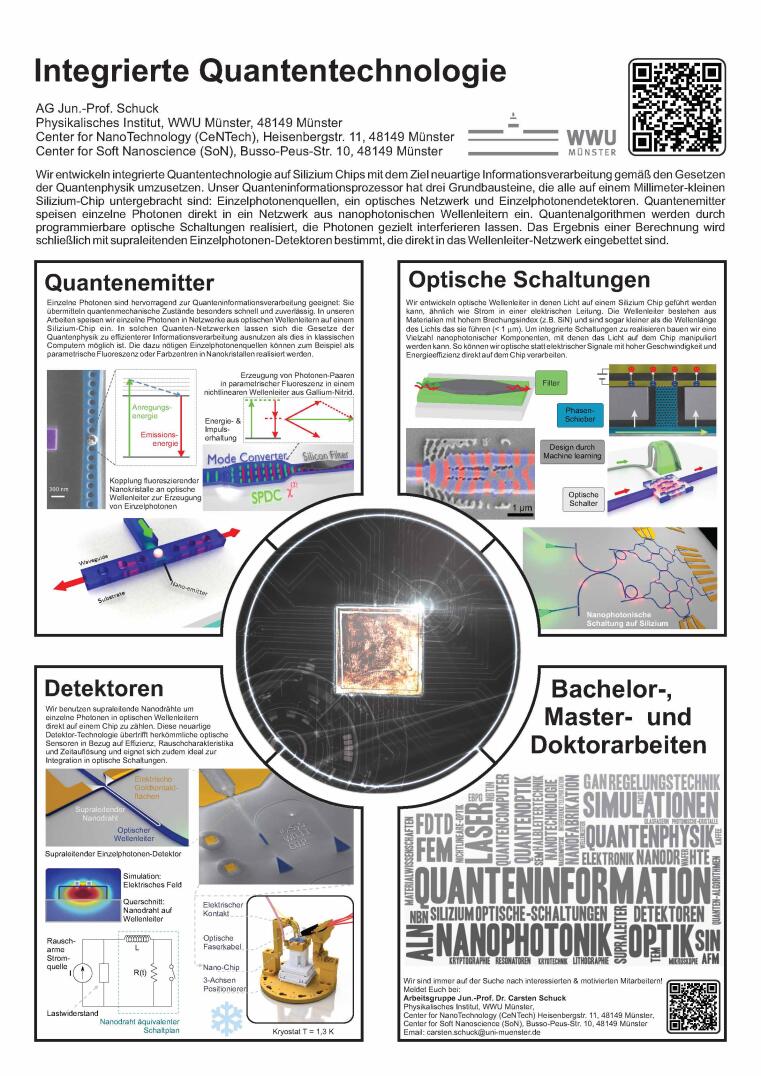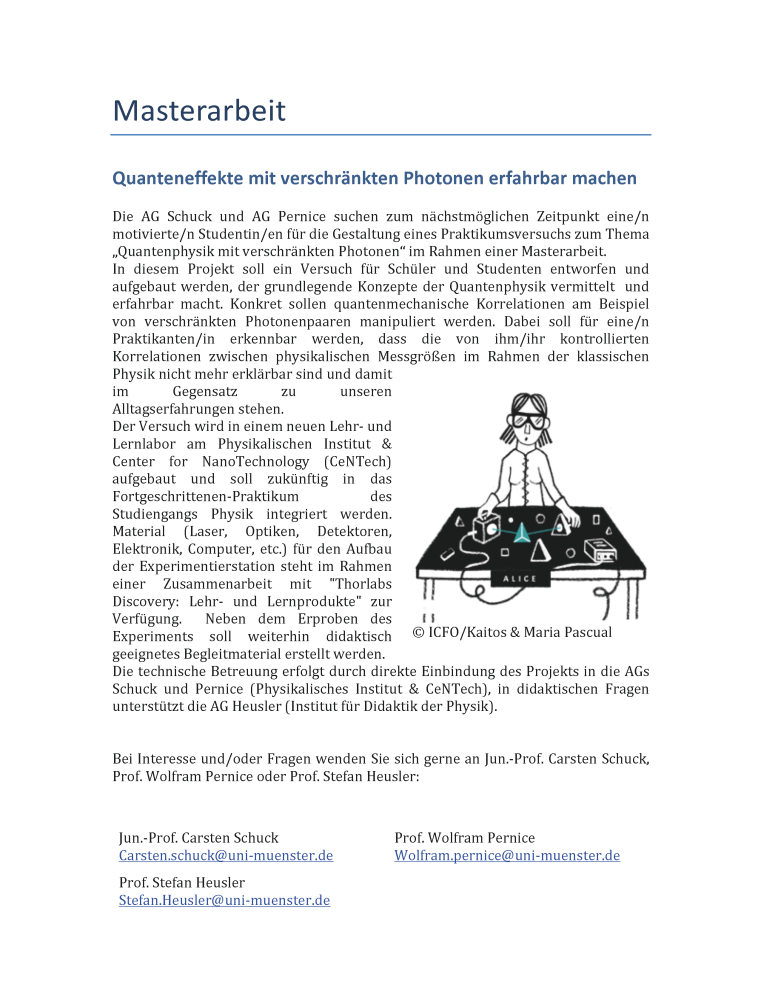PhD and Postdocs Openings
Wir sind immer auf der Suche nach motivierten und ambitionierten Doktoranden für unsere Experimente mit Quanten-Emittern, nanophotonischen Schaltungen und supraleitenden Einzelphotonen-Detektoren. Bei Interesse meldet Euch gerne bei Prof. Schuck.
Aktuell bieten wir außerdem zwei Doktorandenstellen 1/2 und eine Postdoc-Stelle an!
We always seek motivated and ambitious PhD candidates for our experiments with quantum emitters, nanophotonic circuits and superconducting single-photon detectors. If you are interested please get in touch with Prof. Schuck.
Currently, we are also offering two doctoral positions 1/2 and one postdoc position!


